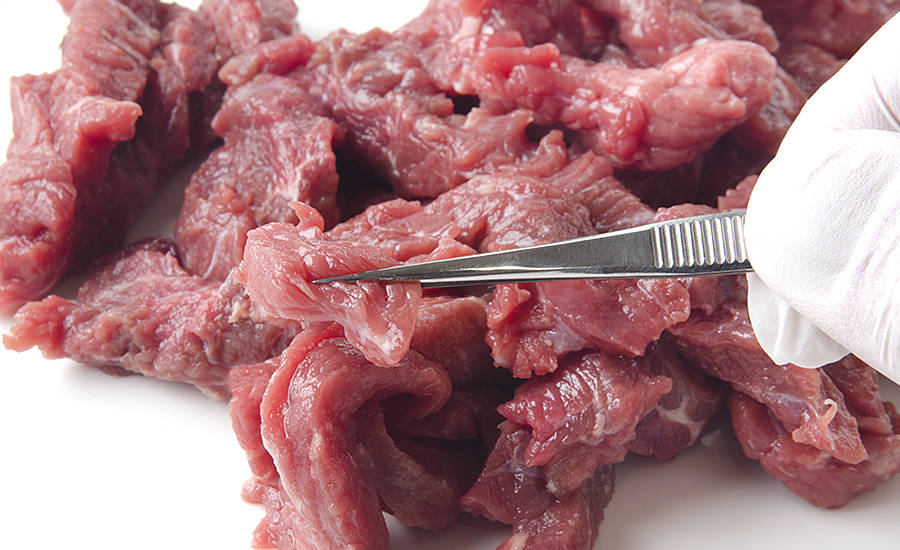In looking at the last 12 months of U.S. Department of Agriculture (USDA) Food Safety and Inspection Service (FSIS) recall data, we noticed some definite trends. First, total recalls are down: There were 109 FSIS recalls compared with 149 in 2015.
Allergen-related recalls are down, from 42 percent in 2015 to 28 percent in 2018. Recalls for misbranded products that didn’t include allergens dropped from 11 percent in 2015 to 8 percent in 2018. Both trends are going in the right direction.
The Centers for Disease Control and Prevention (CDC) WONDER data on death certificates in 2015 and 2016 show there were no reported deaths from food allergies, but this doesn’t match the “estimated” deaths from food allergies from CDC. The CDC estimates 150 deaths from food allergies and continues to make it a focus of enforcement. We also see the majority of third-party auditors focusing on allergen controls. The question is: Are the numbers because of the focus, or despite it?
The most disturbing trend we pulled out of the recall review was the continued high numbers of recalls for contamination. As an industry, we must get contamination in source material under control.
Recalls for foreign-material contamination now account for 23 percent of all recalls, which is a jump from 7 percent of recalls in 2015.
One reason I suspect the number of recalls has gone up for foreign-material contamination is the requirement to report adulterated or contaminated product that is in commerce. Inevitably when we are working at a client’s and go over receiving procedures, we discover an incoming shipment that has plastic gloves, knives or other items contaminating the product. Having a robust foreign-material program is as important as your allergen and labeling programs!
We also noted several recalls for “Misbranding” which may not have had to be recalls. FSIS can grant temporary approval for labels that aren’t perfect. If you have an issue, we strongly recommend you at least request a temporary approval if you meet the criteria; recalling for no reason is a waste of everyone’s time and resources, not to mention it gives the industry an unnecessary black eye.
An issue we see on the rise is the issue of amenability of bison, elk and venison. FSIS doesn’t have jurisdiction over these products other than when under voluntary inspection; yet they issued a recall for bison, without the authority to do so.
We are seeing a trend among producers of these products to forgo FSIS voluntary inspection and produce them under the Food and Drug Administration’s (FDA’s) inspection program Food Safety and Modernization Act (FSMA). Please be cautious if you go this route, as some states do not recognize FDA’s authority over these products, and until it is settled in court you may find your finished packaged product detained or embargoed. For example, the state of Texas uses a live-animal exception (to protect its livestock/wild herds) to preclude finished packaged product from entering the state if it is produced under FDA inspection. The other thing to remember: You cannot use imported exotic species as an ingredient in your products under voluntary inspection (you can in your amenable products).

Rules and regulations
The new Appendix A and Appendix B compliance guideline is temporarily on hold. I must commend FSIS senior management for listening to industry and being part of the dialogue concerning these documents. While compliance guidelines do not have legal weight, in the case of the lethality and cooling documents, the impact on the industry is enormous and potentially devastating. Running ongoing sampling (500 samples per year according to the guidance document) is both cost prohibitive as well as ridiculous.
FSIS and FDA have put out a lot of documentation in the last year, from chicken livers to swine, and our favorite: Trichinae. While there has been a fair amount of documentation coming out, one of the biggest changes people are talking about is the viability of moving beef slaughter into the modern age by developing a HACCP-based Inspection Models Project (HIMP)-like system. Although this scares a lot of folks, modernizing the inspection progress is something that must be done.
Salmonella control is a hot topic and will continue to be, but if FSIS wants to reduce Salmonella positives, industry needs research dollars for establishing ways to reduce the prevalence of illness-causing Salmonella up and down the supply chain. Expecting the slaughter establishments to be the only point of control is destined to fail.
Trichinae generally isn’t a hazard in modern swine operations; however, as FSIS pointed out, the consumer trend of wanting pastured hogs may bring it back as a hazard. The simplest solution is to know the source of your pork products and take the appropriate actions. Americans still typically overcook pork, and in the case of Trichinae, that is not a bad thing!
Another hot topic is the accuracy of foodborne outbreak investigations. From experience, I would hesitate to express any confidence in the way outbreaks are investigated. This is probably the one area that supports a single-food safety agency. There are just too many different players in the system with different criteria used to perform the investigations. Turf battles between the different agencies can result in the wrong product being identified as the causative agent, resulting in additional human illnesses. Fortunately, most outbreaks are self-limiting.
Food-safety teams find themselves short-staffed, primarily because of the lack of qualified workers available. As an industry, we need to focus on getting the right people on our food safety teams. This challenge has a dramatic impact on small- and medium-size producers. Planning and keeping your talent pipeline full is critical. We are also seeing an issue with auditing, and although this has primarily affected our FDA-regulated clients, it is having a derogatory impact on our meat and poultry clients as well. Qualified auditors who know and understand the regulatory environment in which our processors live and work is critical to an accurate audit.
Employee shortages don’t just affect the food-safety teams; they have a negative impact on most operations. Most facilities appear to be running short-staffed. This is where having a highly qualified leadership team is critical. Knowing what is acceptable, what isn’t and how to navigate the regulatory environment when you lack resources can be a challenge.

Looking into the crystal ball
With the shortage of employees throughout facilities, automation is in almost everyone’s future. Technology is advancing at a rapid pace. Keeping up with it is going to be a challenge for food-safety teams; being able to leverage it is mandatory.
The trade war will also have an impact. As it drags on, the derogatory impact on production will be felt. Having said that, companies will invest in automation as well as people. We tend to see clients buy a lot of different systems that don’t talk to each other. If possible, make sure your systems are integrated, so you can truly control your food-safety parameters as well as quality. Keeping the two separate is becoming more difficult, and in the end may not make sense.
I expect there to be several more guidance documents released over the next year; with hope, they will include lethality and stabilization updates that make sense for the entire industry.
An area that is just now getting attention affects those who grind beef. 9 CFR 320.1 (b)(ix)(4)(i)(E) requires that the date and time when grinding equipment and surfaces are cleaned and sanitized, not when pre-operational inspection is conducted. You must have a record of when you cleaned and sanitized it AND when it passed pre-operational inspection. We are seeing a definite increase of NRs being written for not having the date and time of the cleaning and sanitizing.
The final area that I expect to see change is in the outreach activities being conducted by Enforcement Investigation and Analysis Officers (EIAOs) at the federal level. Although I expect these visits to be generally positive, establishments need to realize they are the ones who own and operate their food-safety system. The EIAO providing the information may or may not understand your business and operations. I recommend you engage the EIAO in a constructive conversation about any issues they may raise. There are almost always multiple ways to be compliant; make sure you know your options and pick the best one for your operation.
After looking at the last 12 months, I am again happy to report that as an industry meat, poultry, egg products and catfish producers have done a great job of producing safe and wholesome product. As always, we need to get that message out, it is human nature to dwell on the negative, even in light of all of the positives we see. NP






Report Abusive Comment